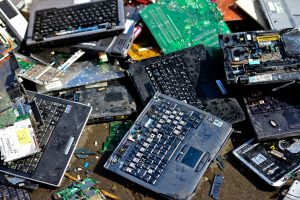43 million tons.
That is the total amount of e-waste created across the world last year, according to the UN.
Kwik Sweep finds this problematic, if not scary. In fact, the same amount is predicted to rise to an estimated 55.2 million tons by 2121.
Our team, which also specialises in WEEE disposal, has thus decided to raise awareness on this issue. So, read on, and find out why e-waste is a threat to our planet.
The vast majority of the developed world’s waste electronics gets shipped to developing countries, with a staggering 85 per cent being sent to the poorest parts of Africa. These countries are ill-equipped for the disposal of WEEE and end up using landfill to get rid of such waste and make profit from its import.
Meanwhile, a large proportion of the e-waste crisis is due to the increasingly slim-line design of several electronic goods, which makes them harder for people to dismantle and recycle effectively.
So, in spite of 66 per cent of the world’s countries having specific laws around WEEE, the latter is still a problem, and only 41 countries currently collate computer recycling data.
Why is this so controversial though?
Well…
E-waste recycling is dangerous due to the toxins produces and released when electronics are discarded into landfill or poorly recycled. Considering that only 8 per cent of America’s e-scrap processing plants follow e-waste guidelines, it is fair to consider WEEE management a real issue.
For this reason, Kwik Sweep endeavours to aptly dispose of WEEE in London.
We recycle, or reuse, all WEEE we collect, fulfilling our commitment to reducing the amount of waste going to landfill.
So, should you need to dispose of your electric waste, get in touch with us. Our WEEE clearance and IT disposal services are efficient, quick, and cheap.




